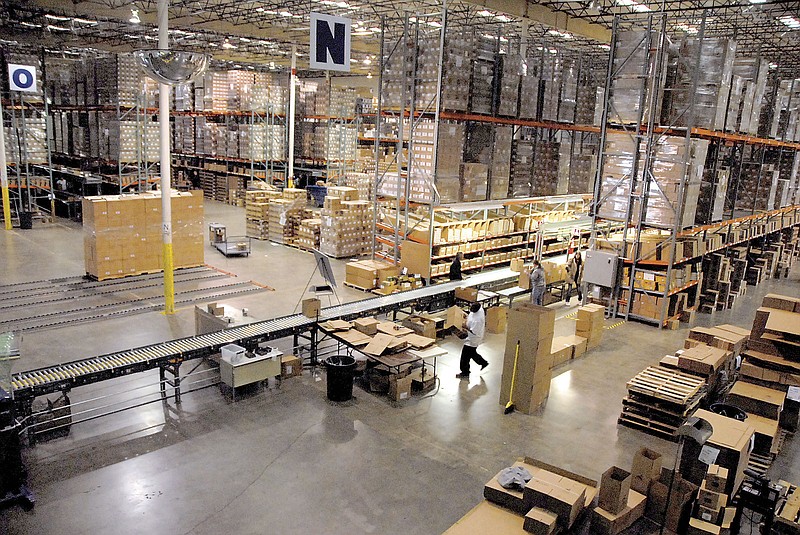After recently announcing $40 million in new business last year, Kenco Logistics executives are confident that the company's aggressive efficiency program is paying off.
Jim Kennedy III, chairman and an owner of the family enterprise, said the third-party logistics company's continued activity in the face of falling demand lies in small innovations and incremental improvements.
"We look at how long does it take to reach out and grab something, how many steps do you take," he said.
The company official said Kenco works constantly to make operations more efficient by working directly with employees to improve productivity.
"We go to one place in the building, and say 'what can we do here," Mr. Kennedy said. "It's very democratic, with a lot of stopwatch work."
Of the $40 million in new business, most of the growth in 2009 came from the food storage and distribution sector. Mr. Kennedy said the company wrote roughly $20 million in new business for existing customers, and $20 million for new customers.
But recession-fueled attrition has diluted their success somewhat.
"When people aren't buying as much, this is a warehouse, this is where it all comes from, so if people buy 20 percent less we lose 20 percent of that business," Mr. Kennedy said.
Even considering slacking demand in some sectors, he said company remains in the black.
"We're going to add another line here, which will be another 20,000 square feet," Mr. Kennedy said of Kenco's Wauhatchie Pike distribution center.
One of the firm's newest leveraged technologies is a fingertip scanner, a Star Trek-like bar code-reader attached to the arm, hand and finger of the user to help employees work faster and more accurately, according to President and COO Andy Smith.
"We strive for continuous improvement and innovation," Mr. Smith said. "Five years ago we were using something completely different, and five years from now we'll be doing something else different."
It's part of the company's sustainability concept, he said, which extends to Kenco's economic model in addition to environmental and social concerns.
Another part of economic sustainability is the company's "Lean" program. Officials examine the expenditure of resources for any goal other than the creation of value for the customer, and attempt to preserve value with less work and waste.
"It takes a big commitment, but we believe our payback is writing new business and improving our margins with existing business," Mr. Smith said.
For 2010, Mr. Smith said he expects small gains in growth, likely in the single digits.
"When we can do this for our customer at the right rate, that's a great thing when we can help employees take care of their families," he said.
Mr. Kennedy, who oversees 3,400 workers nationwide, including 600 full-time employees in Chattanooga working in four million square feet of space, is confident that Kenco's business model will hold up.
"We'll grow by doing a great job for our existing customers, and then there will be more customers out there we can do business with," he said, but added that the market is always unpredictable. "Over the years we've waxed and waned, sometimes it works out well, sometimes you can't tell where the next piece of business is going to come from."
The most recent piece of business was announced last Tuesday, when Kenco and Schnellecke of America announced the formation of a new joint venture called Team 3 Logistics that will offer logistic solutions to support automotive production in the Southeastern United States.

